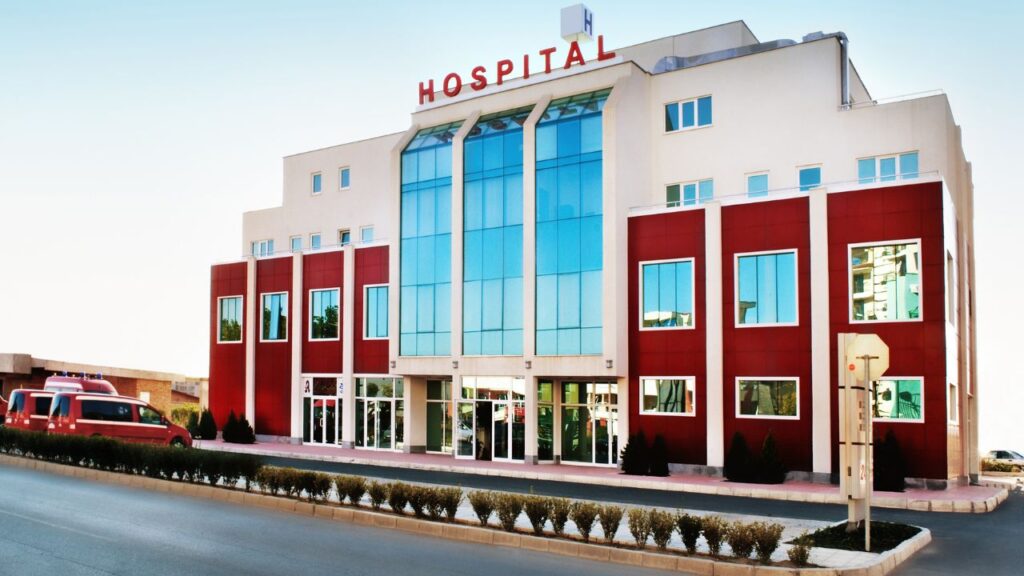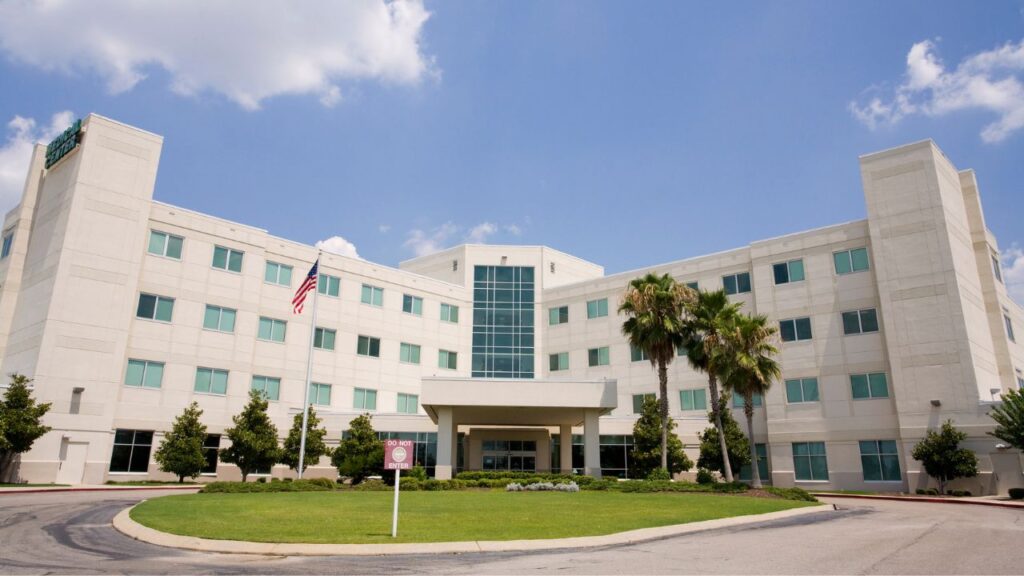Bid Strong, Bid Smart – Try Our Hospital Construction Cost Estimating Service!
- Accurancy
- Efficiency
- Transparency
- Customization
- Time Saving
- Professionalism
- Cost Control

The construction of a pool deck in a hospital setting requires careful consideration of various factors to ensure a durable and aesthetically pleasing environment. Pool decks play a vital role in providing relaxation and recreation for patients, visitors, and hospital staff. Choosing the right type of concrete and understanding the key cost factors are essential for a successful project. In this article, we will explore the factors influencing hospital pool deck concrete costs and discuss effective cost-saving strategies.

The design complexity of a hospital pool deck plays a pivotal role in dictating construction costs. When opting for elaborate designs, intricate patterns, and custom finishes, the ensuing need for specialized formwork and skilled labor significantly contributes to higher expenses. Achieving an optimal balance between an aesthetically pleasing design and adherence to budgetary constraints becomes paramount. This delicate equilibrium necessitates careful consideration during the design phase, requiring collaboration between architects, designers, and construction teams. The challenge lies in seamlessly integrating visually appealing elements without compromising the overall cost-effectiveness of the construction project.

Fully Insured License
Hire Contractor For Hospital Construction

Make Informed Design Decisions Showcase Your Design Ideas
Get RenderingThe size and layout of a hospital pool deck emerge as decisive factors that directly influence both material and labor costs. Larger decks with complex layouts inherently demand a more substantial volume of concrete and additional construction time, leading to escalated expenses. To manage costs efficiently, meticulous planning and optimization of the deck’s dimensions become imperative. This involves a comprehensive assessment of the intended usage, traffic flow considerations, and the overall functionality of the pool deck. Careful attention to detail during the planning phase guides architects and engineers in creating a space that meets design aspirations while remaining within the confines of the designated budget.
The choice of concrete quality stands as a critical decision with implications extending beyond the immediate construction phase. While opting for high-quality, durable concrete may incur higher initial expenses, the long-term benefits in terms of longevity and reduced maintenance costs are substantial. The selected concrete quality becomes a cornerstone for the pool deck’s resilience, ensuring that the investment aligns with the economic efficiency of the constructed infrastructure. This strategic decision involves a nuanced calibration between immediate costs and the anticipated long-term savings derived from the durability and performance of the chosen concrete quality.
The type of finishes and treatments applied to the pool deck surface significantly influences overall project costs. Decorative finishes, non-slip coatings, or specialized textures may enhance the visual appeal and functionality but can also contribute to increased expenses. Achieving a balance between the desired aesthetics and the project budget is essential to avoid unnecessary costs. This involves thoughtful consideration of alternative materials and finishes that meet both design expectations and cost-effective construction practices.

Collaboration between designers and construction professionals becomes crucial in navigating these choices to achieve the desired aesthetic without compromising fiscal responsibility.
Pool decks in hospital settings often come with specific reinforcement needs due to increased foot traffic and potential heavy use. Understanding these requirements and optimizing the use of reinforcement materials are vital for ensuring structural integrity without overburdening costs. A precise analysis, considering anticipated foot traffic patterns and adherence to local regulations, helps prevent unnecessary expenses related to over-engineering. This strategic approach reflects a proactive stance, where engineers work closely with project stakeholders to tailor reinforcement plans that guarantee the longevity and safety of the pool deck without inflating construction costs.
The condition of the construction site and the extent of preparation needed exert a significant impact on overall costs. Factors such as soil stability, drainage considerations, and existing structures contribute to the complexity of site preparation. Proactively conducting thorough site assessments during the planning phase becomes a strategic and cost-saving measure. Addressing potential challenges in site preparation ensures that the construction team is well-prepared to navigate site-specific complexities while managing costs effectively. This approach lays the foundation for a stable and cost-effective construction process, emphasizing the importance of foresight and thorough planning in achieving fiscal responsibility.

Simplified design planning plays a pivotal role in minimizing construction costs by reducing the need for specialized formwork and labor. Streamlining the design to avoid unnecessary complexity and intricate patterns contributes to significant cost savings. The collaborative efforts between architects and construction teams are crucial in achieving a delicate balance between aesthetic aspirations and budget constraints. By prioritizing simplicity and functionality in the design phase, healthcare institutions can create an aesthetically pleasing pool deck that aligns with financial considerations, ensuring a cost-effective and visually appealing outcome.
Efficient use of space and thoughtful planning of the pool deck’s dimensions are integral to optimizing material usage and reducing labor costs. Careful consideration of the layout ensures not only a functional but also a cost-effective construction process. Architects and engineers play a key role in this phase, utilizing their expertise to design layouts that minimize waste, maximize efficiency, and align with the designated budget. The optimization of dimensions and layout reflects a strategic approach to construction, where every square foot is utilized effectively, contributing to overall cost efficiency in the development of the hospital pool deck.
The selection of an optimized concrete mix is a critical decision that impacts both quality and cost-effectiveness. Collaboration with concrete professionals becomes essential in gaining insights into the properties of various concrete mixes. This collaborative approach aids in making informed decisions that align with the specific requirements of the hospital pool deck. Striking the right balance between meeting stringent quality standards and remaining cost-effective ensures that the chosen concrete mix contributes to the durability and economic efficiency of the constructed infrastructure.

Smart reinforcement planning involves a thorough analysis of anticipated foot traffic and compliance with regulations to determine the necessary reinforcement. This strategic approach prevents over-engineering, avoiding unnecessary expenses associated with excessive use of reinforcement materials. Engineers working closely with project stakeholders tailor reinforcement plans to guarantee the longevity and safety of the pool deck while maintaining a cost-efficient construction process. By aligning reinforcement needs with actual requirements, healthcare institutions strike a balance between structural integrity and economic considerations in the development of their pool deck.
Exploring local suppliers for concrete and construction materials is a strategic move that significantly reduces transportation costs. Establishing partnerships with nearby suppliers can lead to bulk purchasing discounts and more competitive pricing. This not only contributes to financial efficiency but also aligns with sustainable practices by minimizing the environmental impact associated with long-distance material transportation. Local material sourcing becomes a win-win strategy, enhancing cost savings while promoting environmental responsibility in the construction of the hospital pool deck.
Well-organized project scheduling is a cornerstone of minimizing labor costs in the construction of the pool deck. Timely execution of tasks, effective coordination among team members, and proactive problem-solving contribute to overall labor efficiency. Project managers play a crucial role in orchestrating a schedule that optimizes workforce productivity, minimizes downtime, and avoids unnecessary expenditures associated with prolonged construction timelines. Efficient project scheduling reflects a commitment to optimizing labor resources and minimizing costs throughout the construction process.
Implementing a proactive maintenance plan for the hospital pool deck is an investment in long-term cost savings. Regular maintenance and timely repairs prevent minor issues from escalating into major, costly problems. This proactive approach ensures the longevity of the pool deck, avoiding the need for extensive repairs or reconstruction that could incur substantial expenses. By prioritizing regular maintenance, healthcare institutions demonstrate a commitment to sustainability, contributing to overall financial prudence and responsible infrastructure management.
The national average materials cost for installing a concrete pool deck sees an increase of 20%, amounting to $2.15 per square foot, falling within the range of $2.00 to $2.29. Consequently, the total price for labor and materials per square foot, reaching $9.80, with a range between $8.88 and $10.74. For a standard 300 square foot project, the adjusted cost is $2,942.98, ranging from $2,663.81 to $3,223.15. It’s essential to note that the actual price is subject to variations based on factors such as location, job size, conditions, and the selected finish options.
Constructing a hospital pool deck involves navigating the delicate balance between aesthetics and budget considerations. Key factors, including design complexity, size, concrete quality, finishes, reinforcement, and site preparation, influence costs. Employing cost-saving strategies, such as simplified design, optimized dimensions, smart concrete mix selection, and efficient scheduling, can enhance financial efficiency. Local material sourcing, strategic reinforcement planning, and regular maintenance further contribute to sustainable cost management. The adjusted national average estimates provide insights into potential costs. Thoughtful planning and strategic decisions are crucial for achieving a cost-effective and visually appealing hospital pool deck in alignment with financial responsibility.
Design complexity, size, concrete quality, finishes, reinforcement, and site preparation are key factors that impact construction costs.
Elaborate designs, intricate patterns, and custom finishes may require specialized formwork and skilled labor, leading to higher construction costs.
High-quality, durable concrete incurs higher initial expenses but offers long-term benefits, including improved resilience and reduced maintenance costs.
Strategies include simplified design planning, optimized dimensions and layout, smart concrete mix selection, efficient scheduling, local material sourcing, and proactive maintenance.
Specific reinforcement needs for increased foot traffic and heavy use must be carefully analyzed and optimized to ensure structural integrity without unnecessary expenses.
Well-organized scheduling ensures timely task execution, effective coordination, and proactive problem-solving, contributing to overall labor efficiency and cost management.
Here I am going to share some steps to get your hospital pool deck concrete cost estimate report.
You can send us your plan on info@estimatorflorida.com
Before starting your project, we send you a quote for your service. That quote will have detailed information about your project. Here you will get information about the size, difficulty, complexity and bid date when determining pricing.
Our team will takeoff and estimate your project. When we deliver you’ll receive a PDF and an Excel file of your estimate. We can also offer construction lead generation services for the jobs you’d like to pursue further.



561-530-2845
info@estimatorflorida.com
Address
5245 Wiles Rd Apt 3-102 St. Pete Beach, FL 33073 United States
561-530-2845
info@estimatorflorida.com
Address
5245 Wiles Rd Apt 3-102 St. Pete Beach, FL 33073 United States
All copyright © Reserved | Designed By V Marketing Media | Disclaimer